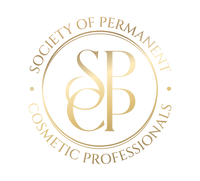CPCP Certification Exam
The CPCP examination was developed to support the growing need of the permanent cosmetic industry in 2004. Having achieved CPCP status, and proudly displaying the acronym after your name, demonstrates a distinct level of knowledge and dedication to the industry. CPCP certificants are held in the highest regard by industry peers and clientele in this very competitive industry.
|
CANDIDATE REQUIREMENTS FOR EXAMINATION Technician members of the SPCP are not required to take the CPCP examination in order to maintain membership; nonmembers may take the examination without being members even though member eligibility is required. This means a candidate must accept and abide by the SPCP Code of Ethics. |
|
OTHER REQUIREMENTS A course of study in the field of permanent cosmetics of not less than 100 hours at the fundamental level. If less than 100 hours, continuing education specific to the industry must be accumulated to achieve 100 hours total. Proof of hours are required. If they are not listed on a certificate, a short note from the trainer specifying hours is acceptable. A certificate from a current Bloodborne Pathogens (BBP) class. Classes must be industry specific. OSHA Standard is required if the candidate works in the USA. The candidate must be currently active in the permanent cosmetics industry or has recently completed a training program or apprenticeship. A completed application is required with a copy of a photo ID, documentation of classes and/or continuing education, proof of the Bloodborne Pathogens Class, and the required fees. The application must be in the SPCP office 14 days before the exam. An incomplete submission will not be processed. Do not send membership certificates or copies of certificates from other programs or industries such as cosmetology, esthetics, nursing, etc. EXAM DOMAINS Infection Control consists of: prevention cross contamination, hand washing, specific infection control terminology/definitions (such as sepsis, asepsis, sanitation, sterilization, etc.), methods of transmission of infections, knowledge of herpes virus, hepatitis virus, and other bloodborne pathogens and other potentially infectious materials, etc. Pigments/Inks consist of: color theory (traditional color theory, permanent cosmetics color theory, and differences), undertones, color correction, pigment ingredients (powders, organic, inorganic, carrier/hydrating solutions, etc.), pigment/ink allergic reaction correlation, potential interactions with medical testing equipment, etc. Technical Application consists of: application of theory to practical application (tattoo technique best practices, skin stretching, practical application of color theory, the healing process, color retention, etc.) Anatomy & Physiology (A&P) consists of: terms used to describe the study of related anatomical and physiological characteristics, their purpose and function, healing processes, etc. Diseases & Disorders (D&D) consists of: definitions and characteristics of commonly encountered disorders, methods of transmission, vaccinations, etc. Regulations consists of: health regulations as they may concern permanent cosmetics, regular vs. regulated waste, disposal requirements, and oversight agencies, etc. Legal consists of: legal protection/waivers, scope of practice, insurance/ lawyers, documentation/photos, etc. Client Management/Documentation consists of: client comfort, client history and procedure documentation, best practices when working with clients, etc. |
RESOURCE LIST
The SPCP has developed the Certification Examination at the fundamental level so those professionals, having successfully completed training that meets the CPCP Candidate requirement, and have attended a bloodborne pathogens class, should be able to pass the exam studying training materials.
The following resources have been used as reference materials for the SPCP Certification Examination and can be very helpful for those professionals who would like to review prior taking the exam.
These publications are available through the Society of Permanent Cosmetic Professionals and this website.
Primary Resources
Permanent Cosmetics—The Foundation of Fundamental Applications, 2nd Edition.
Principles of Infection Control for the Tattoo Industry
Medical Issues for Permanent Cosmetics Technicians Esthetics for Permanent Cosmetics
Client Management Handbook
SPCP Glossary of Terms
The purpose of this glossary was originally to assist those who are non-English speaking as their primary language to better understand some common terms used in the US that may not have clear translations into other languages. The glossary has since been expanded and can also serve as a study aid for candidates preparing for the CPCP examination who wish to review terminology. It is available for download from the SPCP website.
Bloodborne Pathogens Standard
OSHA Regulations (Standards-29 CFR) Bloodborne Pathogens-1910.1030. Occupational Safety & Health Administration, 200 Constitution Avenue, NW, Washington, DC 20210, 800-321-OSHA. http://www.osha.gov
To fill out your CPCP application form, click here.

